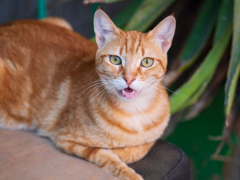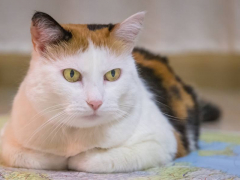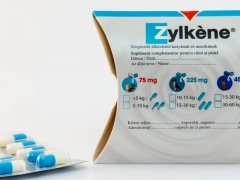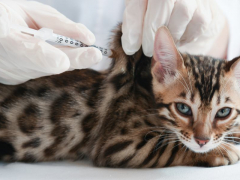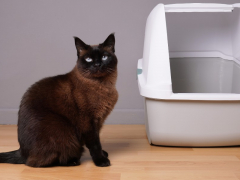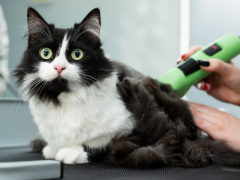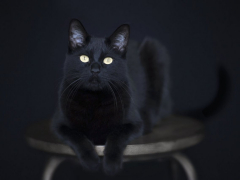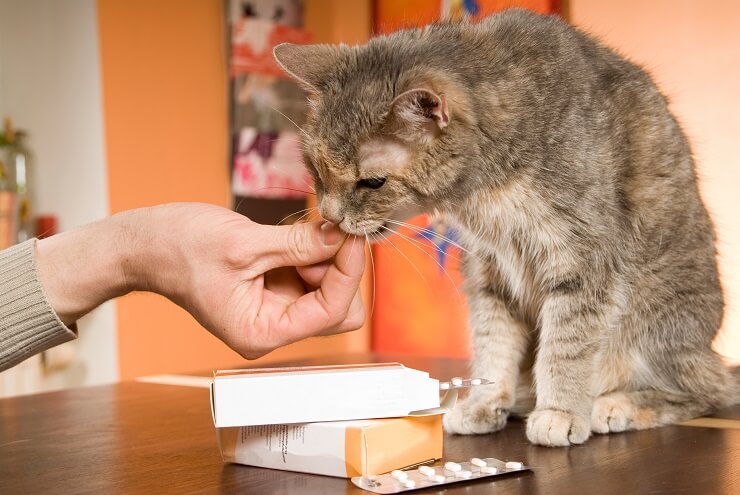
Clindamycin is an antibiotic that may be used in cats, especially in the cases of wounds, abscesses, or dental-associated infections like tooth root abscesses.
In this article, you’ll learn how clindamycin works, types of infections it is most often used for, potential side effects to monitor for, and some frequently asked questions.
Clindamycin For Cats Overview

About Clindamycin for Cats
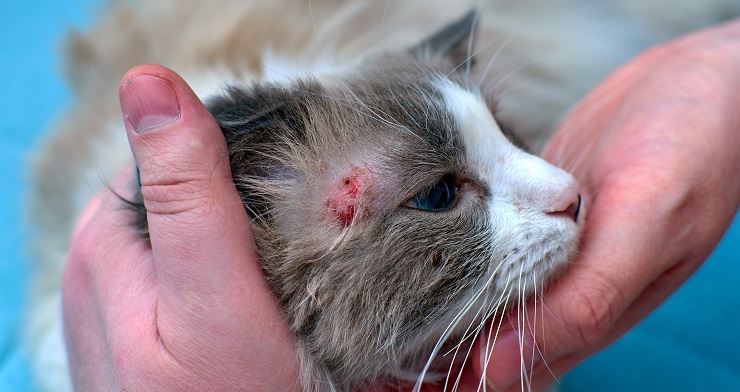
Clindamycin is a lincosamide antibiotic that has a fairly broad spectrum against certain types of bacteria. The brand name Antirobe Aquadrops manufactured by Zoetis is FDA-approved for use in cats for infections associated with wounds, abscesses, or dental disease.
While the capsule form of clindamycin is not FDA approved for cats, the capsules may be used in an off-label manner as well, especially the 25mg and 75mg capsules.
What Does Clindamycin Do for Cats?
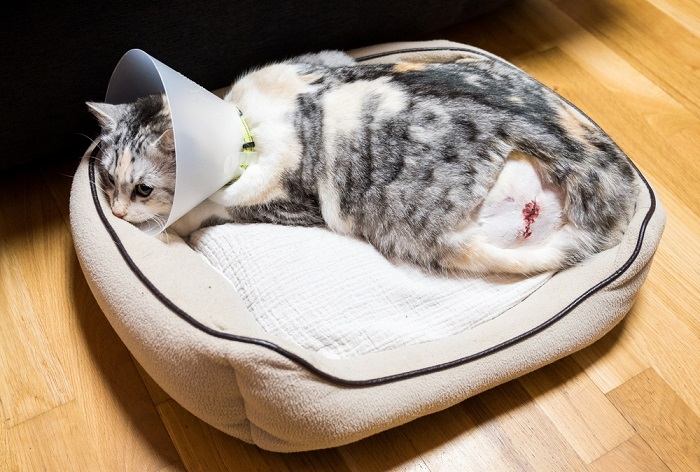
As a lincosamide antibiotic, clindamycin may be either bactericidal or bacteriostatic, depending on the dosage and concentration of the drug at the intended site, and how susceptible the target bacteria are to it.
Although termed “bacteriostatic”, implying it only inhibits growth of bacteria, an antimicrobial acting as a bacteriostatic agent does actively kill bacteria. It simply requires a higher concentration than an antibiotic labeled as “bactericidal”.
Thus, for bacteria that are equally susceptible, clindamycin is not necessarily a “weaker” or “less effective” antibiotic when used as a bacteriostatic agent vs. bactericidal agent.
Clindamycin acts on bacteria by inhibiting protein synthesis of their cell wall.
Clindamycin has a broad range of effect against certain types of bacteria. This includes aerobic (oxygen dependent) round-shaped bacteria called cocci like Staphylococcus and Streptococcus.
Clindamycin also has a good effect against non-oxygen dependent bacteria, called anaerobes, which include Clostridium perfringens and Bacteroides fragilis.
All four of these bacterial strains may be found in dental infections in cats. Staph and Strep species of bacteria may also be found complicating surface wounds, while Clostridium and Bacteroides are found more in abscesses, such as those caused by the bite of another cat.
There is a whole host of bacteria called gram-negative bacteria, which clindamycin is not effective against. A second antibiotic would need to be used to help cover for these bacteria if appropriate.
Much of the time, veterinarians will determine the appropriate antibiotic to use based on the likelihood of susceptible bacteria in the area affected. However, there may be times when a culture and sensitivity is required to determine exactly what strains of bacteria are present and what type of antibiotic is most effective against them.
Although not labeled for it, clindamycin also has an effect against the protozoal organism Toxoplasma gondii, that causes toxoplasmosis. For those not familiar, this is the organism some cats may carry or shed in their stool, prompting human physicians to carefully council pregnant mothers to avoid contact with the litterbox.
When used to treat for toxoplasmosis, clindamycin may need to be used at higher doses. While it may suppress some infections, it may not completely clear the organism in all cases.
This is also why, if a pregnant person is in the home and toxoplasmosis is a concern, that testing a cat in the home for exposure and presence of toxoplasmosis first with blood testing may be preferred to generalized use of clindamycin in an otherwise healthy cat.
Side Effects of Clindamycin for Cats
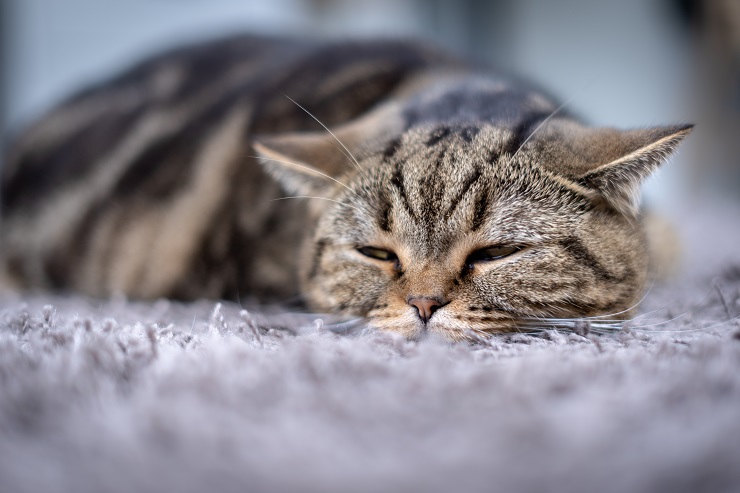
Apart from some cases, it appears that most cats tolerate clindamycin very well and show very limited signs of toxicity.
The most commonly reported side effects in cats include signs of gastrointestinal upset, like vomiting and soft stool.
Giving any antibiotic with food may help to offset some of these types of side effects. In studies involving cats specifically, use of pre and probiotics also helped to reduce these types of side effects.
There have also been reports in cats getting the capsule form of clindamycin developing signs of esophageal inflammation and something called an esophageal stricture.
A stricture in the esophagus is a narrowing of the tissue that makes it harder for ingested items to pass through. An esophageal stricture can occur secondary to irritation or ulceration of the tissues after scar tissue forms when those lesions heal.
Typically veterinarians don’t recommend “dry-pilling” cats, especially with certain medications including doxycycline and clindamcyin. These are best given in a treat designed to wrap around medication, like a Pill Pocket.
If dry-pilling must be used, it is often recommended to follow the medication with about 1ml of water dosed by a syringe to ensure the tablet or capsule doesn’t get stuck on the esophagus wall.
Using the liquid form of clindamycin (brands include Antirobe, ClinDrops, Clindacure, and others) will not contribute to stricture formation and can be a safer alternative form to use in this regard, as long as your kitty will tolerate a liquid medication.
The downside is that the common concentration of 25 milligrams per milliliter will call for at least 2 or more milliliters per dose for a 10-15 lb cat.
With some forms of clindamycin, cats may develop hypersalivation (drooling) or lip-smacking after dosing due to bitter taste.
Fortunately, it appears that most cats otherwise tolerate clindamycin very well. According to the manufacturer of Antirobe, cats dosed at 10x the dose for 15 days showed very limited signs of toxicity and this was also found for cats dosed at up to 5x the dose for 42 days.
If your kitty has any signs of kidney or liver impairment, clindamycin should be used cautiously. In severe cases, the dose may even need to be reduced.
If you ever have concerns about side effects or toxicity in your cat when using clindamycin, make sure to contact your veterinarian, the ASPCA Animal Poison Control Center (1-888-426-4435), or Pet Poison Helpline (1-855-764-7661) for further advice.
Clindamycin for Cats Dosage
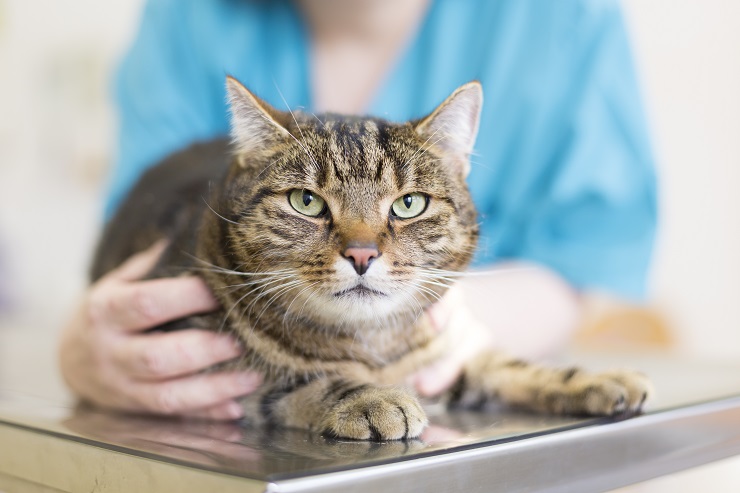
Whatever the case, it is extremely important to follow your veterinarian’s instructions completely and to always finish out the full course of an antibiotic.
The FDA-approved dosage for cats using Antirobe oral drops is 11-33 milligrams per kilogram every 24 hours, given by mouth. The maximum labeled treatment period is 14 days.
There are some cases where a veterinarian may choose a different, off-label protocol based on what is being treated. For example, it is common to treat for toxoplasmosis for 30 days.
How To Give a Cat Clindamycin
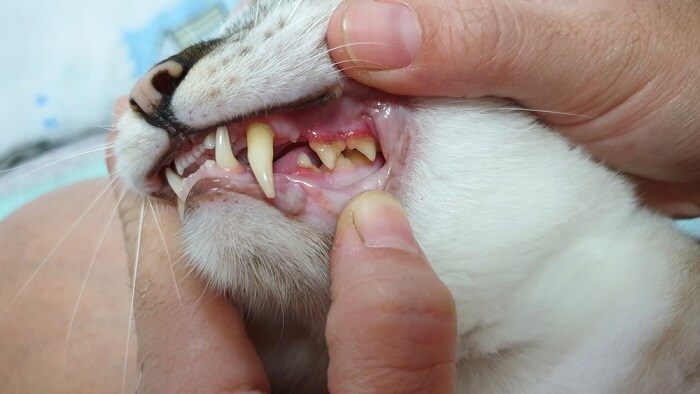
As with any antibiotic, use of clindamycin should only be under the care of a licensed veterinarian.
It is extremely important to follow your veterinarian’s instructions completely and to always finish out the full course of an antibiotic, even if your kitty appears to be doing or feeling better.
Stopping an antibiotic too early may increase the risk that bacteria may rebound and develop resistance to that antibiotic, making it ineffective.
Conclusion
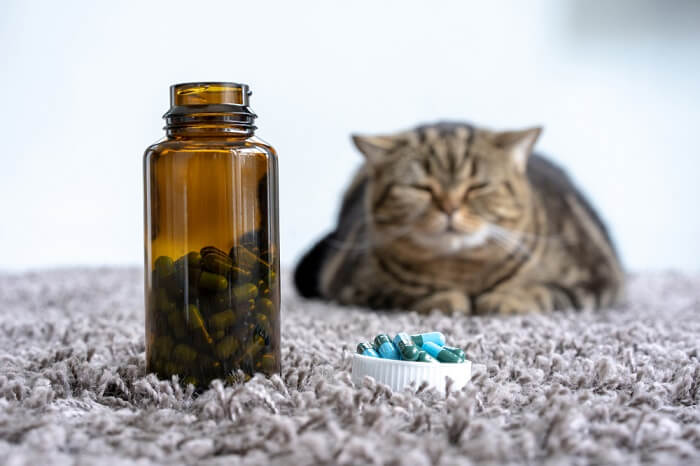
Clindamycin is a very useful antibiotic for cats, especially in the case of wounds, abscesses, or dental infections. Cats also tolerate it very well, though some may develop a mild gastrointestinal upset.
However, like all antibiotics, clindamycin cannot be used against all bacteria, and its indication for use needs to be restricted to a veterinarian’s discretion.
Drug Dosing Disclaimer: We are only able to provide doses for medications that are FDA approved for use in cats and only as the label guidelines dictate. For medications that are used off-label we can only provide guidelines and safety information for use. Safe and appropriate dosing for off-label medications can only be determined by a primary care veterinarian.
We encourage you to work with your veterinarian to determine if a particular medication is appropriate for your cat. Changing or adjusting a dose for your cat on your own without consulting with a veterinarian can carry risk. We do not encourage use of medications prescribed for human use in pets without first consulting with a primary care veterinarian.
Frequently Asked Questions
What is Clindamycin for Cats Used to Treat?
Primarily, clindamycin is most often used to treat wounds, abscesses like from cat bite wounds, and dental infections. It may also be used in some cases to treat some bacterial infections on the surface of the skin as well.
While not labeled for it, clindamycin also has effect against the protzoal organism Toxoplasma gondii. Toxoplasmosis can be transmissible to people, making it a zoonotic disease, and is the main reason human physicians caution pregnant women against coming in contact with a litter box.
While many cats with toxoplasmosis may only carry the organism and show no signs of disease, very young cats or those with a compromised immune system may develop signs of neurologic or ocular (eye) disease.
How Much Clindamycin Do You Give a Cat?
The labeled dose of Antirobe is 11-33 milligrams per kilogram every 24 hours. However, there may be some variations in dosing protocol depending on the disease being treated, so always make sure to closely follow a veterinarian’s guidelines and instructions.
Is Clindamycin Bad for Cats?
Clindamycin is not bad for cats at all, in fact cats tend to tolerate it very well. However, any antibiotic may cause signs of digestive upset.
Any antibiotic or other medication could be considered bad for a kitty if it is being used inappropriately or at an inappropriate dose. That’s why it’s very important to only give your cat clindamycin based on a veterinarian’s instructions.
Can You Give Your Cat Clindamycin?
While people may be prescribed clindamycin (typically capsules) themselves, it is important to never give your cat a medication prescribed for yourself. First, the dose prescribed for a person is going to be much higher than a dose prescribed for a cat and even one capsule prescribed for a person is likely to be too high a dose for a typical cat.
Second, the capsule form of clindamycin is accompanied by an increased risk of esophageal irritation and stricture (scarred narrowing of the esophagus) formation. A liquid form of clindamycin is available for cats through a veterinarian. If a pill or capsule is needed, your veterinarian can provide the best information on how to most safely administer this form to your cat.
